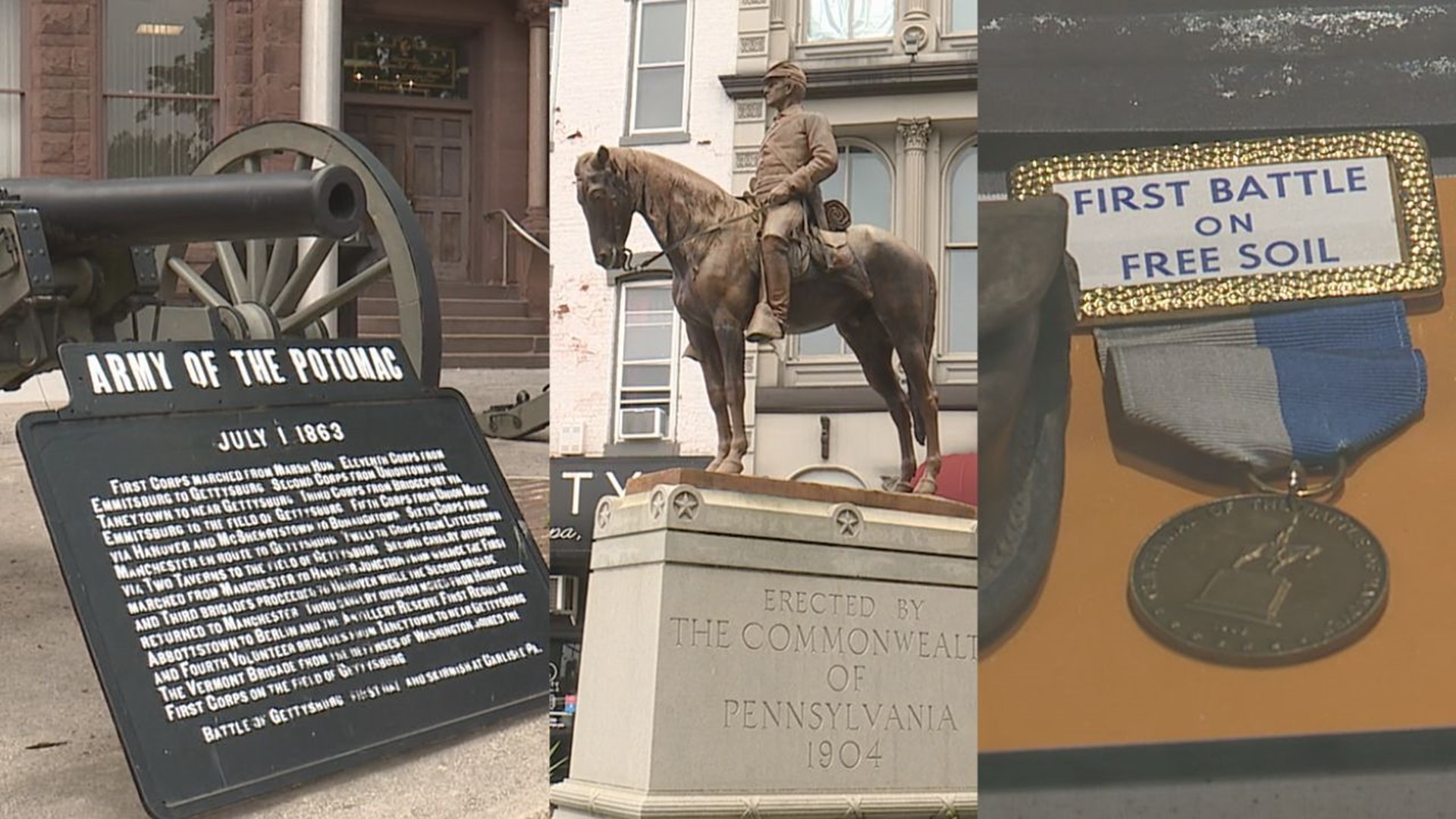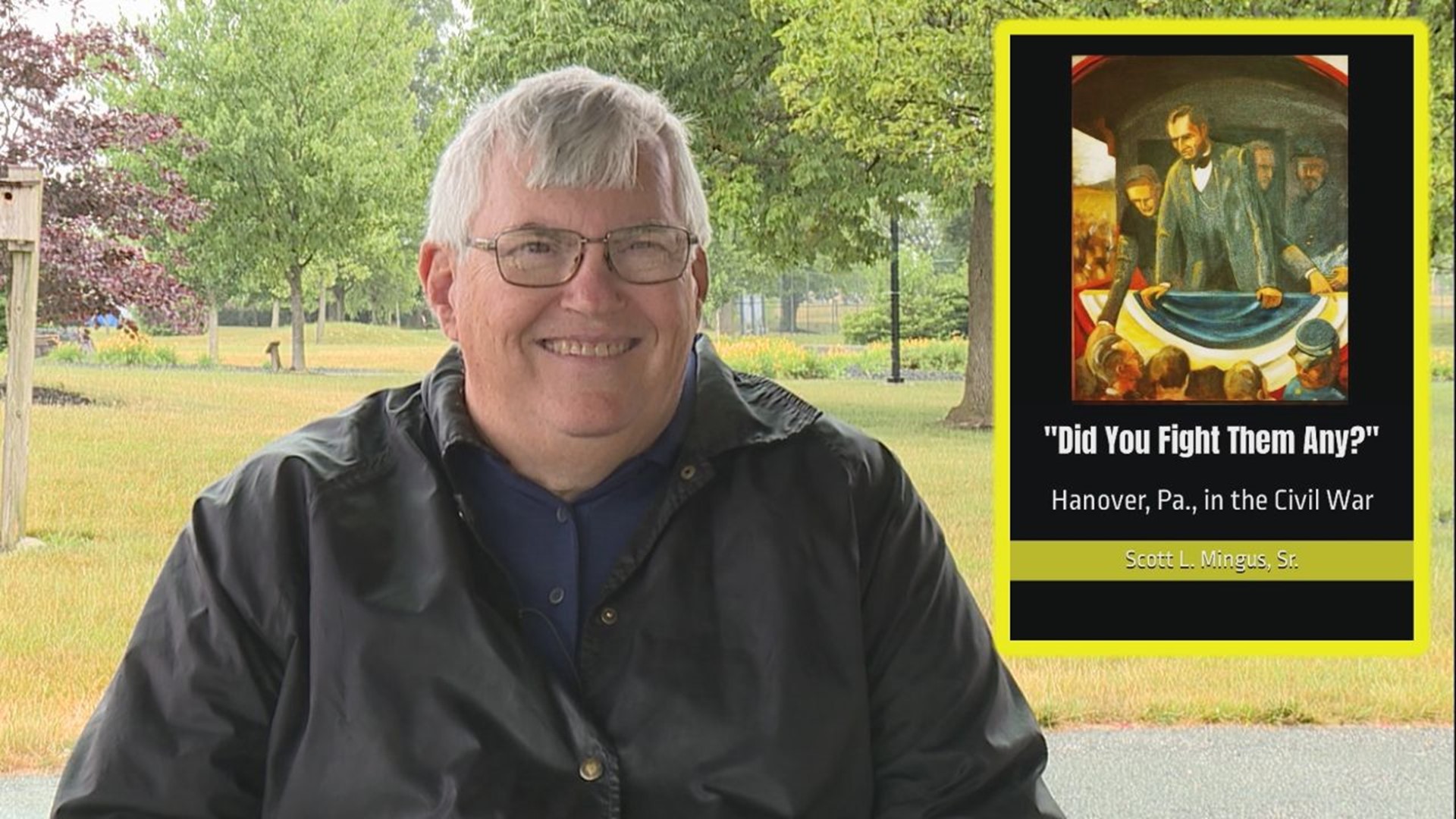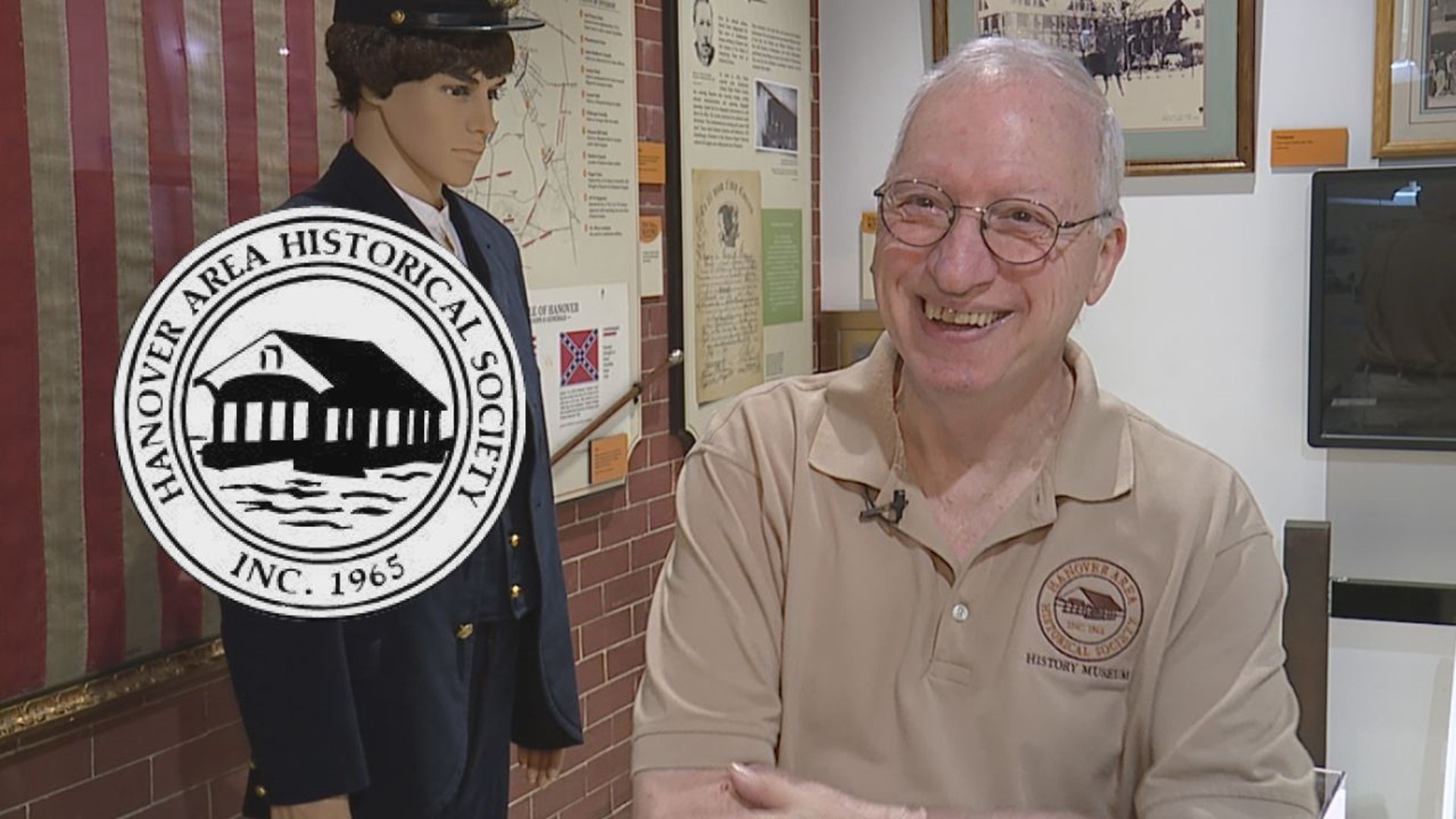HANOVER, Pa. — On Tuesday, June 30, 1863, Hanover, Pennsylvania celebrated as Union Brigadier General Kilpatrick's cavalry rolled through the city's streets.
"Hanover's citizens were giving them beer, food, pie, cake, and some of the soldiers got these small little things they've never seen before, which the Germans called pretzels," said Scott Mingus, the author of '''Did You Fight Them Any?' Hanover, Pa., in the Civil War." "A lot of these soldiers had never tasted a pretzel before and Hanover was their first experience, and many men record in their diaries and letters about this very salty, very tasty snack that the people of Hanover were giving to them."
Just three days earlier, 275 Confederate cavalrymen had stopped in Hanover to raid stores. It would start a stretch the townspeople had heard a lot about, but not seen...until quite suddenly and by accident.
"We got a lot of rumors. Hanover is in the middle of rumors," said Ken Weiler, the chair of the Museum Committee for the Hanover Area Historical Society. "'The rebels are coming. The rebels are coming.' Well, they never showed up. They never showed up. So it was something of crying wolf."
JEB Stuart was known as the eyes and ears of the Confederates. He was hauling around 125 seized Union supply wagons and heading north to try and find the rest of the Confederates. Instead, he found himself in an all-out cavalry battle, this one taking place in downtown Hanover.
"They ended up having a pretty savage fight, particularly along Frederick Street, a couple of side alleys, all the way through town," recalled Mingus.
"You've got dead horses and 40-something casualties strewn throughout the streets of Hanover," added Weiler.
The full interview with author Scott Mingus can be seen in the video above.
The front of the Union line had reached Abbottstown when they heard the shots near the rear. Kilpatrick rode his horse so hard to get back to Hanover that legend says his horse died once it arrived back in town. But Kilpatrick was just one thing that the Confederates had to worry about.
"I think Stuart himself acknowledged, 'for the first time as we rode further north, Hanover was the only time that the civilians took up arms, in addition to the Federal army," stated Weiler.
"There were women and civilians from Hanover shooting at the Confederates from the second-floor windows of their houses," Mingus said. "They would pop open the shutters and shoot the rebels as they were going by on horseback. I guess one of the dangers of urban warfare is you don't necessarily know who the enemy is."
After the initial fighting in the town, citizens ran out to try and set up barricades.
"A Confederate reed shell from Mount Olivet Cemetery was fired into Hanover," Weiler said. "As you notice, it didn't explode when it hit. It went through the upstairs bedroom of the Winebrenner House on Frederick Street, in through the second floor, in through their daughter's bedroom. She was in her bed. Then the shell rolls into the hallway, still smoking. Dad came upstairs and picked it up and threw it into the garden and it still doesn't explode."
The full interview with the Hanover Area Historical Society's Ken Weiler can be seen in the video above.
One man who's known in history for his last stand made his first real headlines in Hanover.
"George Armstrong Custer was totally unknown. He was new to his men. He was new to the public," said Mingus. "Hanover was his first battle as Brigadier General. At Gettysburg a few days later, first at Hunterstown and then at Gettysburg's east cavalry field, Custer proved himself to be a very aggressive, pretty competent general."
Eventually, Stuart started to pull his men out, and by 2 a.m. his column spanning almost 17 miles reached Dover.
"That delay put him in Gettysburg late on day two of the three-day battle," said Weiler with a smile. "Just think if he would've got all those supplies on those wagons sooner, the outcome at Gettysburg could've been questionable. So we like to think that Hanover saved the nation."
"What Hanover will turn out to be is the largest military engagement in York County history, almost 10,000 men," added Mingus.
Additional resources to learn more about the Battle of Hanover can be found here:
- Scott Mingus' Books
- Visit the Hanover Area Historical Society's Museum



